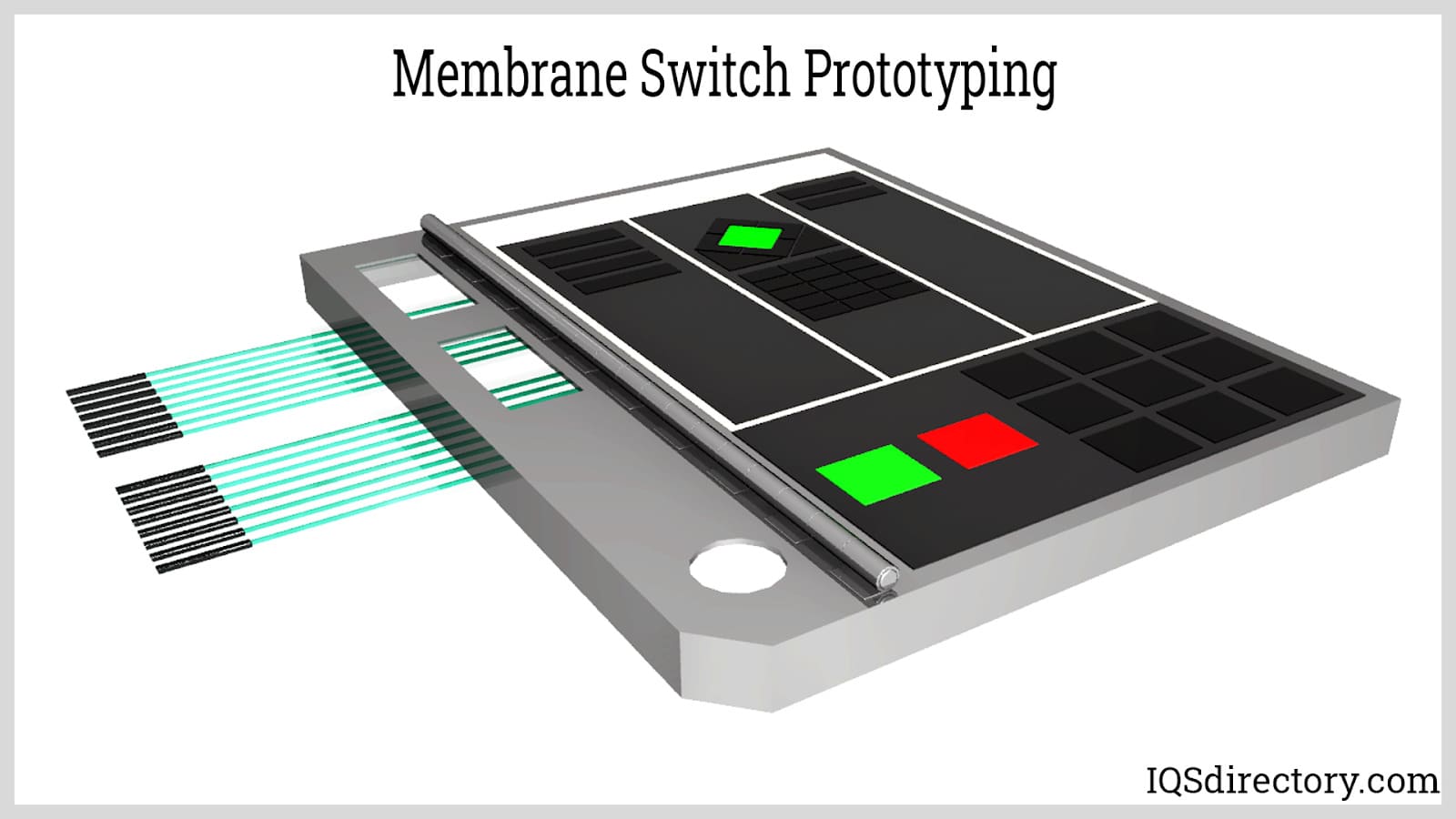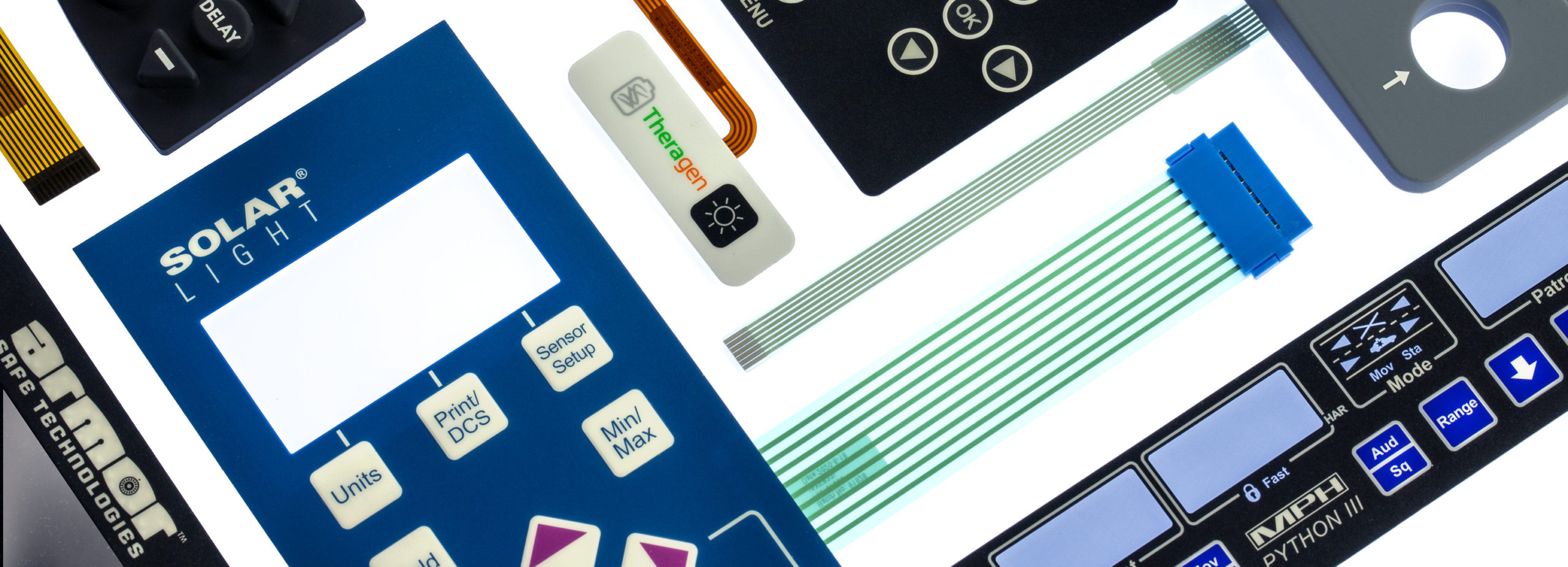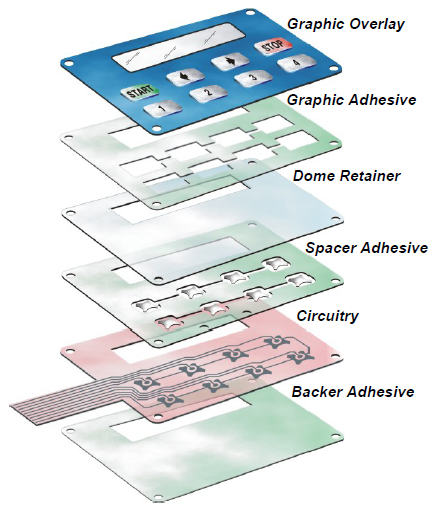Membrane Switches: A Essential Component in Personalized Control Panels
Membrane Switches: A Essential Component in Personalized Control Panels
Blog Article
Why Membrane Switches Over Are Crucial for Sturdy Control Solution
Membrane layer switches play an essential function in ensuring the resilience and dependability of control systems throughout various markets. Their special building permits them to withstand difficult ecological variables such as moisture, temperature extremes, and physical wear. This resilience not just extends the lifespan of the systems they serve but also minimizes maintenance requirements. As we check out the diverse benefits of membrane buttons, it becomes noticeable that their relevance transcends simple capability, affecting customer experience and operational effectiveness. What further implications do these qualities hold for the future of control system style?
Review of Membrane Switches
Membrane layer buttons are functional and dependable parts commonly utilized in various digital control systems. These switches contain a number of layers, consisting of a visuals overlay, a spacer layer, and a published circuit layer. The visuals overlay supplies both practical and visual design, while the spacer layer makes sure that the switches are turned on just when pressed. The published circuit layer has conductive traces that finish an electric circuit when the membrane layer is pressed, enabling the tool to respond to customer inputs.
Membrane layer buttons are frequently preferred in applications needing a compact and lightweight style, making them ideal for handheld tools, medical equipment, and industrial equipment. They can be tailored to meet details user demands and can incorporate different features such as backlighting, tactile feedback, and multiple shades. Membrane buttons are resistant to dust, moisture, and pollutants, making them suitable for environments where toughness is essential.
Advantages of Sturdiness
In lots of applications, the longevity of membrane switches over offers significant benefits that enhance their general efficiency and reliability. These buttons are designed to hold up against severe atmospheres, making them ideal for use sought after problems such as high moisture, severe temperatures, and direct exposure to chemicals. Their robust building and construction assists to avoid damage from physical effect, making sure durable capability and minimizing the need for frequent replacements.
Furthermore, membrane layer buttons are resistant to deterioration, which is essential in applications where frequent interaction occurs. This resilience equates to decrease upkeep prices, as companies take advantage of lowered downtime and fewer solution disruptions. Moreover, the encapsulated layout of membrane changes protects interior components from dirt and moisture ingress, further contributing to their life expectancy.
Another advantage is their ability to preserve consistent efficiency in time. With a high tolerance for mechanical stress and anxiety, these buttons maintain their tactile responses and electric honesty, making certain user complete satisfaction. Inevitably, the toughness of membrane switches not just boosts operational efficiency however additionally fosters confidence in their integrity, making them a preferred selection for control systems across different fields.
Applications in Various Industries
Durable control systems using membrane layer switches discover extensive applications across a variety of sectors, each gaining from the distinct qualities these buttons supply. In the clinical market, membrane buttons are crucial for gadgets such as individual displays and diagnostic devices, where dependability and simplicity of cleaning are extremely important. Their resistance to wetness and impurities guarantees they maintain capability in sterilized atmospheres.
The automotive market leverages membrane layer switches for dashboard controls and infomercial systems, where they supply smooth, inconspicuous user interfaces that enhance customer experience. These buttons are likewise created to endure severe problems, consisting of direct exposure to extreme temperature levels and vibrations.
In industrial setups, membrane layer buttons are generally utilized in equipment control panels, using responsive comments and resilience required for high-usage applications. Their capacity to withstand chemicals makes them suitable for manufacturing settings where spills and pollutants are frequent.

Customer electronic devices, such as cooking area devices and push-button controls, likewise utilize visit this site membrane layer buttons for their versatility and cost-effectiveness. Overall, the flexibility and robust nature of membrane layer switches make them vital throughout numerous fields, making certain effective procedure and long life in control systems.
Style and Aesthetic Appeal
While functionality is paramount, the layout and visual appeal of control systems geared up with membrane layer switches play a vital role in individual engagement and overall experience (membrane switch). The aesthetic design of these switches can significantly influence customer understanding and communication. A properly designed membrane layer switch enhances the appearance of the device, making it extra attractive to individuals and fostering a connection in between the customer and the product
Membrane changes provide a good deal of flexibility in layout, allowing suppliers to personalize graphics, colors, and appearances to line up with brand name identity and product appearances. The usage of vibrant colors and distinctive patterns can attract focus, while tactile responses can strengthen you could look here the individual's interaction with the device. Additionally, the ability to incorporate LED signs and backlighting right into the membrane switch layout provides both functional and visual benefits, improving presence and use in various settings.

Enhancing User Experience

Furthermore, membrane buttons can be tailored to incorporate visual interfaces, boosting functionality by presenting details in a clear and instinctive way (membrane switch). This personalization can consist of icons, labels, and color coding that overview customers through complex performances easily. In addition, their adaptability enables for integration in various settings, ensuring regular efficiency whether in industrial machinery or customer electronic devices
The sturdiness of membrane layer buttons likewise plays a critical duty in user experience. By standing up to harsh conditions and prolonged usage, these switches lower the possibility of system failures, thus promoting reliability and customer self-confidence. Inevitably, the critical use of membrane layer switches not just boosts functionality however pop over to these guys additionally substantially enriches individual communication with control systems, making them a vital component in modern-day style.
Final Thought

Report this page